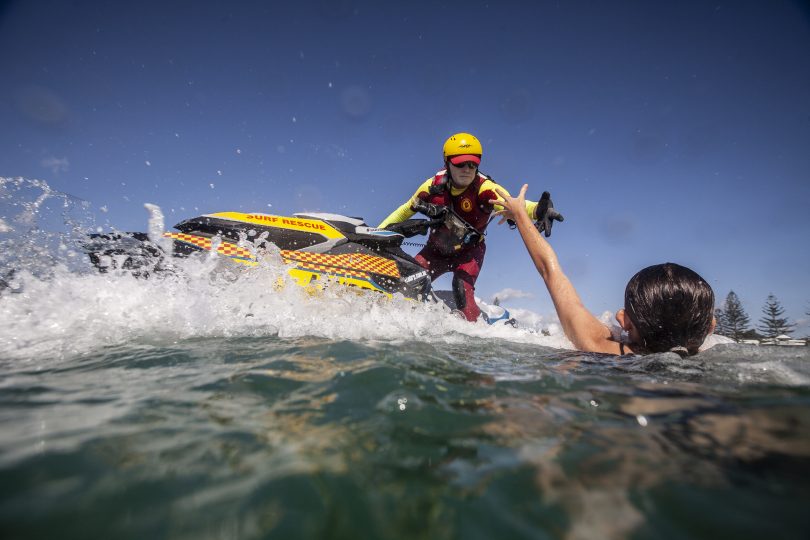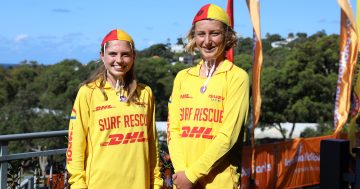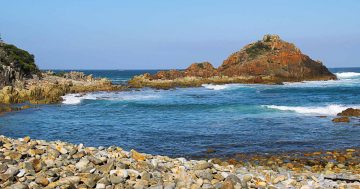
Surf lifesavers are preparing for a busy summer season ahead. Photo: Surf Life Saving NSW.
After a year filled with lockdowns, restrictions and frustration, many of us are hanging out for a relaxing summer filled with blue skies and perfect beach days.
The annual exodus to the NSW South Coast is a tradition for many people, but this year those numbers are expected to be bolstered by those reluctant to gamble on border closures and unable to travel overseas.
But as NSW and the ACT prepares for the anticipated relaxation of COVID-19 restrictions in coming months, lifesavers are warning the expected spike in coastal visitation could have tragic consequences.
The 2021 NSW Coastal Safety Report, released this month by Surf Life Saving NSW, highlights the need for hypervigilance on our beaches, especially following large-scale lockdowns.
These concerns come off the back of a sharp rise in coastal drowning figures nationally – up by 20 per cent overall in 2020-2021.
Of those, five deaths were recorded on the Far South Coast and one on the South Coast.
“Once NSW reaches its vaccination targets and restrictions ease, many people are going to flock to our beaches after being stuck at home for so long,” said Surf Life Saving NSW director of lifesaving Joel Wiseman.
“What’s troubling is the statistics show that following periods of lockdown, we experience a higher number of drowning deaths. Most of these are at unpatrolled locations.
“This comes down to a number of factors, from families seeking more remote and less crowded locations to swim, to the reduced access to swimming lessons and water safety education that comes with being locked down.
“Even the exhaustion of working from home, home-schooling and increased time in confined spaces can lead to complacency when supervising children around water.”
The annual NSW Coastal Safety Report provides a comprehensive summary and analysis of community perceptions, activities on the coast, coastal and ocean drowning deaths, and related fatalities.
In the 12 months from 1 July, 2020, to 30 June, 2021, 88 lives were lost on the NSW coastline, with 45 of those classified as coastal drownings. This is above the average of 42 drowning deaths annually.
Males are alarmingly overrepresented, accounting for 93 per cent of all coastal drowning deaths. Interestingly, men aged in their 60s represented the highest proportion of drownings – 20 per cent of the total.
People who were swimming or wading accounted for 22 per cent of drowning deaths in 2020-2021; rock fishing accounted for one in every five deaths; and boating accidents (nearly a third of all drowning deaths in the previous year) represented 16 per cent of all deaths.
During the 2020-2021 season, surf lifesavers and Australian Lifeguard Service lifeguards rescued 3768 people in NSW, and volunteers spent a total of 663,000 hours on patrol.
The report has also analysed data from key danger periods, such as long weekends, when various factors coincide and the increased risk can be likened to a bushfire emergency.
For example, during the Australia Day long weekend in January, surf lifesavers and lifeguards rescued 815 people across a four-day period, which accounted for 22 per cent of all rescues recorded in the entire year.
The Surf Life Saving NSW research team hopes that by being able to predict these high-risk periods in advance, resources can be allocated to locations or at times they will be most effective.
Also, leading out of lockdown and into summer, Surf Life Saving NSW will be looking at water safety campaigns and measures to reinforce to the community the need to swim at patrolled beaches and to brush up on swimming skills.
“The statistics reinforce the need for us to push surf safety messages throughout our communities,” said Mr Wiseman.
“While our volunteer lifesaving and paid lifeguard services continue to be the cornerstone of our service delivery across NSW, we must also invest in community education programs.
“I have to admit we are very concerned about the increased risk of drowning incidents because people may lack the swimming skills or fitness necessary to enjoy the water safely, particularly children who may have missed out on vital swimming lessons.
“Programs such as nippers will be so important to help kids get back their confidence and develop skills in the surf once we get out of lockdown.”
The 2021-2022 surf lifesaving season is going to look significantly different to other years, with COVID-19 affecting patrols, education, nippers and surf sports.
Patrol numbers will be limited to a maximum of six, and no under-16s will be able to patrol.
At this stage, nippers and surf sports are officially on hold but clubs are planning for nippers to commence in November in line with the planned easing of restrictions.
For information about patrol times, weather and beach locations, visit Beachsafe, or download the Beachsafe app.









